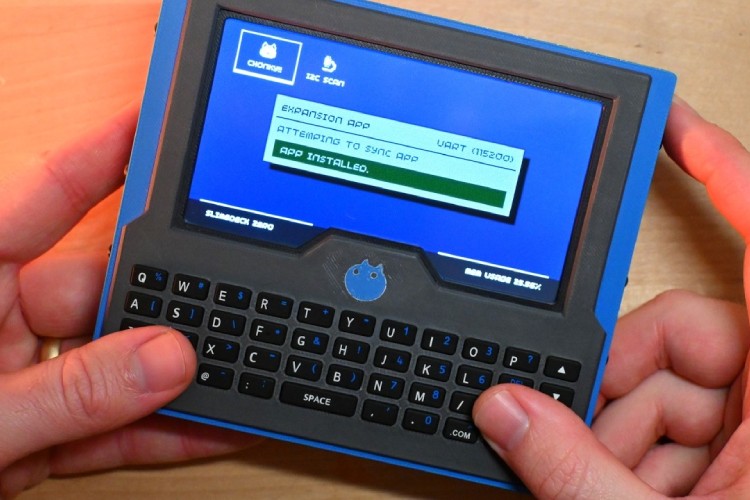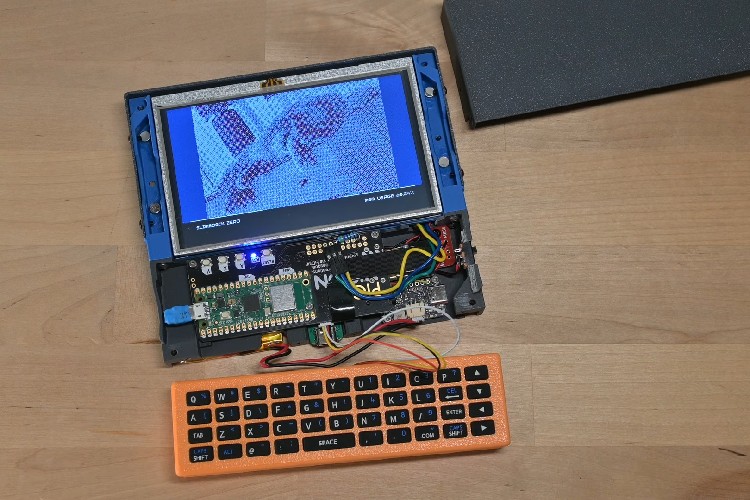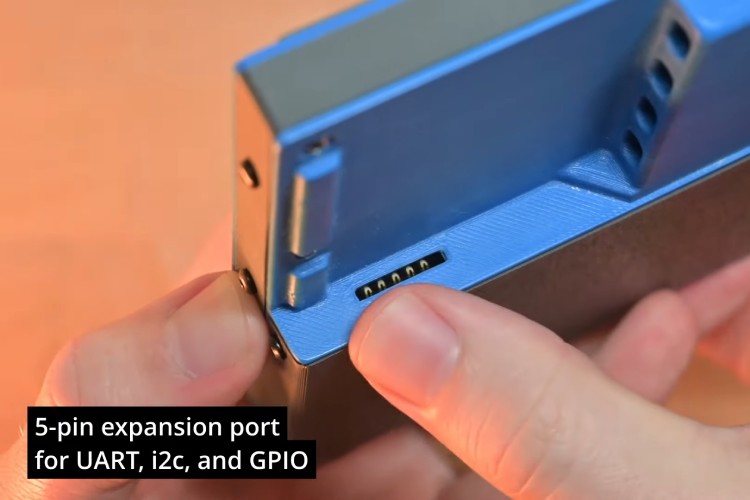
We have seen cyberdecks built around Raspberry Pi and other single-board computers, but this is the first time we’ve come across one powered by dual RP2040 chips. In a recent video, Abe from Abe’s Projects presents a compact cyberdeck using the Pimoroni PicoVision, a board that combines two RP2040 microcontrollers—one acting as a CPU and the other as a GPU—to drive an HDMI display. This setup allows for a smoother display output without overclocking, leaving more memory for running applications. The device boots quickly consumes less power than a full Raspberry Pi, and is programmed in MicroPython, making it easy to develop and share apps.

Abe’s cyberdeck features a 5-inch, 800x480 resolution HDMI screen and a small keyboard repurposed from a TV remote. The keyboard’s original controller was removed and replaced with a custom PCB using a GPIO expander to handle key inputs over I²C, reducing the number of required wires. The entire system is housed in a 3D-printed case, adjusted over multiple iterations to fit all components neatly. Power is supplied via a LiPo battery with a charging circuit, and the device includes multiple USB-C ports for connectivity. There is also an expansion port with UART, ADC, and power pins, allowing additional peripherals to be connected.

On the software side, the device runs Slime OS, an open-source Python-based launcher designed for simple app development. Apps are just Python scripts, making it easy to create and modify them. The system also supports an expansion port detection method using a voltage divider, where connected devices communicate their capabilities by setting a specific voltage. This method allows different peripherals to be identified and configured automatically when plugged in.
Throughout the build, several small refinements were made, such as adjusting the placement of connectors, improving the 3D-printed shell, and modifying the keyboard for better responsiveness. The final result is a fully functional mini-computer with a clear screen, responsive keyboard, and support for expansion modules. The open-source firmware and modular design make it a flexible platform for different applications, whether for programming, debugging, or general-purpose computing.

